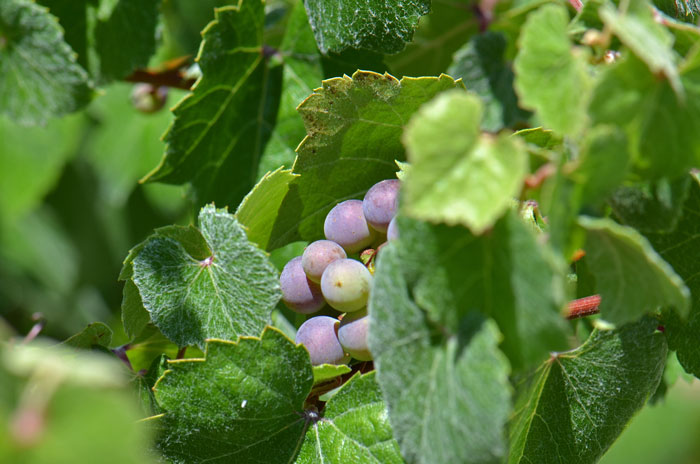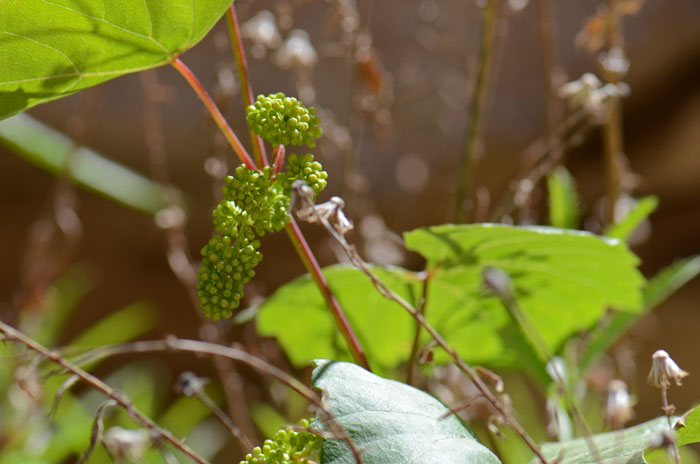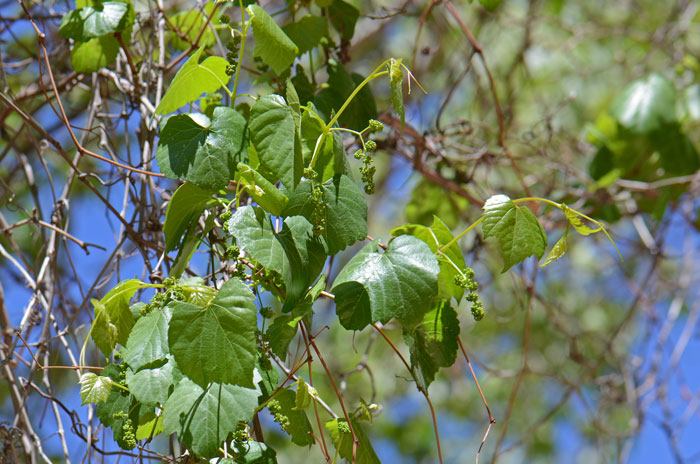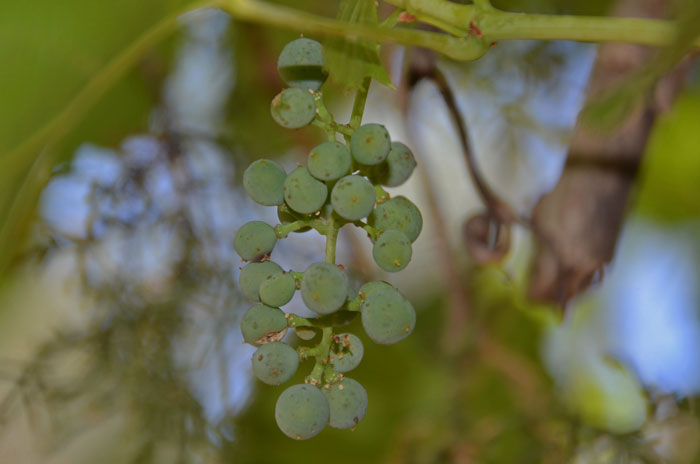Vitis arizonica, Canyon Grape




Scientific Name: Vitis arizonica
Common Name: Canyon Grape
Also Called: Arizona Grape (Spanish: Jiragui, Jirahui, Uva del Monte, Uva Cimarrona, Parra, Vid)
Family: Vitaceae or Grape Family Family
Synonyms: (Vitis arizonica var. galvinii, Vitis arizonica var. glabra, Vitis treleasei)
Status: Native
Duration: Perennial
Size: Up to 12 feet more or less.
Growth Form: vine; plants are vines and/or shrubby; stems and leaves with pubescence, some plants glabrous; vines clambering over rocks, shrubs, trees and other solid structures.
Leaves: Green; small; margins simple, often shallowly 2 or 3 lobed, .
Flower Color: White or greenish; fragrant; petals partly united at flowering; fruit juicy black or blue-berry-like (grape).
Flowering Season: April to July; May to June in Texas.
Elevation: 2,000 to 7,500 feet in Arizona and Texas.
Habitat Preferences: Common along streams and canyons and riparian areas, often climbing in trees.
Recorded Range: Vitis arizonica is found in the southwestern United States in AZ, NM, NV, TX, UT. It is also found in Mexico. In Arizona it is found throughout the state in preferred elevations, few or no records in La Paz, Pinal and Yuma counties.
North America & US County Distribution Map for Vitis arizonica.
U.S. Weed Information: No information available.
Invasive/Noxious Weed Information: In North America Vitis arizonica is listed as a Noxious Weed by the state of Ohio; "all plants of the genus Vitis, grapevines, Prohibited noxious weed." Not applicable to the Southwestern United States. Plants included here are invasive or noxious.
Wetland Indicator: In North America Vitis arizonica has the following wetland designations: Arid West, FACU; Great Plains, FACU; Western Mountains, Valleys, and Coast, FACU.
FACU = Facultative Upland, usually occur in non-wetlands, but may occur in wetlands.
Threatened/Endangered Information: No information available.
In the Southwestern United States: Arizona and Nevada each have 1 species of Vitis, California has 5 species, New Mexico and Utah each have 3 species, Texas has 12 species. All data is approximate and subject to taxonomic changes.
Comments: Vitis arizonica is in the same genus as the commercial, production, wine vineyards. The grapes are eagerly consumed by birds and small and large mammals including bears raccoons. The fleshy grapes are relished by birds, small mammals, and humans, in spite of the large seeds
Vitis arizonica has been used for food and for ceremonial items by southwestern American indigenous peoples.
Apache, Western Food, Dried Food, Berries pounded, dried and stored in sacks.
Havasupai Food, Fruit, Fruit used for food.
Havasupai Other, Toys & Games, Vines used to make the hoop of the hoop and pole game.
Isleta Food, Fruit, Fruit considered an important part of the diet.
Jemez Food, Fruit, Grapes used for food.
Jemez Other, Ceremonial Items, Berry juice mixed with white clay and used as a body paint for dancers.
Navajo Drug, Love Medicine, Vine used to make a cross & put on top of the basket of cornmeal & paper bread offered in courtship.
See ethno-botanical uses at Native American Ethnobotany, University of Michigan, Dearborn.

